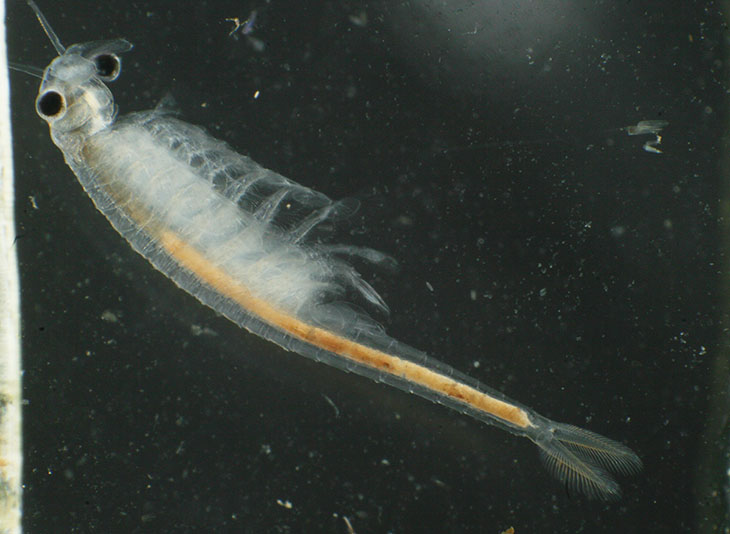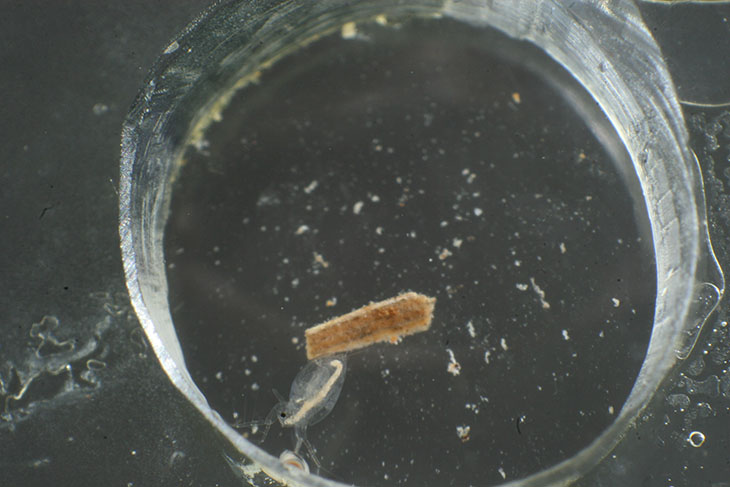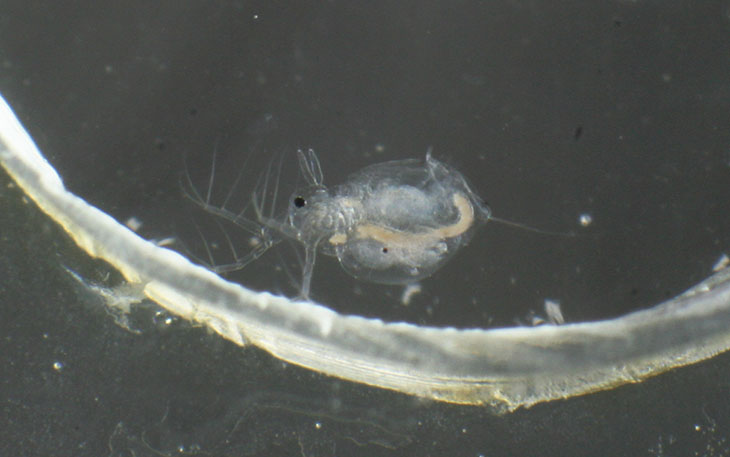Several days ago on my birthday The Girlfriend’s Younger Sprog, with notable forethought, presented me with a Triops hatching kit. Triops are a peculiar critter; sometimes called ‘tadpole shrimp,’ they are freshwater crustaceans of the order Notostraca, and their eggs are one of those types that can sit dormant in dry sand or soil for years, only to hatch when the rains finally come. Much as we might expect them to be sea-dwellers or at least river denizens, instead they are often found in temporary ponds in desert conditions. More importantly to a nature photographer that likes weird things, they look a bit like stretch versions of horseshoe crabs, with a broad head plate and a long tail. I didn’t waste a lot of time in starting the kit off, but I prepared my medium and tiny macro tanks in the interim.
Unfortunately, what hatched wasn’t exactly what was expected.

This is not what any of the photographs I’ve found of Triops looks like; this is more likely a brine shrimp, which is interesting in that the water is not briney at all, being only filtered tap water. Moreover, this is either the only one that hatched, or it quickly consumed any others that came along.

Nonetheless, it appears to be finding plenty to eat, as can be seen from that dark band down the middle, which is the alimentary canal. Between the top photo and the following two I was using two different lighting angles – both are dark field techniques, but the top is bouncing the flash off of a white card, which diffuses it and allows some ‘ambient’ lighting, while the two flanking this paragraph are directly backlit; you can see the difference in contrast, as well as how the digestive canal shows up.

The topmost image, by the way, was taken today, a few days later than the lower two, and at this point the shrimp measures about 10mm, now easily seen from a short distance as it patrols the tank.
Plenty of other things also hatched, and for a day or so I just assumed they were more Triops, but it soon became apparent that I had a fine selection of daphnia in the tank. It does not appear that brine shrimp (or whatever the big guy is) eat daphnia, so they’re all living their merry lives in the tank.

Daphnia are tiny little things that it takes a very close examination of to determine are anything more than blobs. The tan backdrop of this one is a bit of the moss that the eggs come packaged within, which is fairly annoying because some of it floats, some of it sinks, and all of it gets in the way – I sucked this up with the daphnia in the eye-dropper. This is using the tiny tanks, or more specifically, a piece of acrylic with several holes drilled through it glued to a microscope slide, forming little wells that hold a few drops of water. It’s very useful for small, hyperactive subjects like daphnia since it restricts their movement, both from out of view of high-magnification lenses, and in depth that would take them out of focus. Here’s an uncropped view:

The hole drilled through the acrylic is 6.5mm across, so you can judge how small the daphnia is. However, just for more accuracy, I captured another for a better measurement with the ruled loupe I have, and ended up photographing this one too for one (or two, really) special reasons.

The dark eye-cluster and the digestive tract are the only things not transparent on a daphnia, so that means the other dark spot in midbody is… another daphnia. I’ve seen them with internal eggs, but this is the first I’ve seen them with developed young, and it was fascinating watching them squirming around in there. Yes, there’s two – you can just make out the dark spot and ovoid mass showing through the organs of the mother on the lower side of the digestive tract. I wasn’t even sure what I was seeing until I downloaded the images, then went back to get more.

It’s also possible to make out a few anatomical features of daphnia, which are illustrated here. The ‘rabbit ears,’ pointing upwards in this image, are sensory antennae near the mouth, while the serious rack are other antennae used primarily for locomotion. You can also see the apica, little spines from the hind-end that may be used for defenses or swimming, or both. Mama here, the largest in the tank, measures a millimeter in length, so since I don’t have a microscope to work from, this is about the best you’re going to see from me.
Per instructions, I used only half of the egg and moss material provided, so I’ll be trying a second hatching soon; we’ll see what that produces. Should that fail to provide me some Triops subjects, there are always places to buy eggs, so they’ll appear here eventually.





















































Chanced upon your photo while looking for ways to raise brine shrimp. What you have here though is a fairy shrimp. They are food for the triops if your triops ever hatch.
Ah, cool! Thanks!
The second batch produced absolutely nothing, but this might have been my fault – I used rainwater from our barrel instead of filtered tapwater like the last one, knowing that city water has too many chemical additives. Just have to pick up some eggs and see what happens – Triops are too cool looking to leave to other photographers…